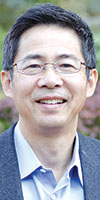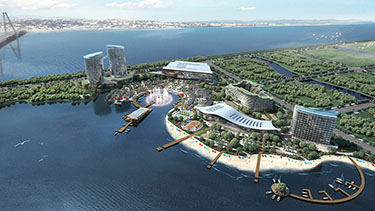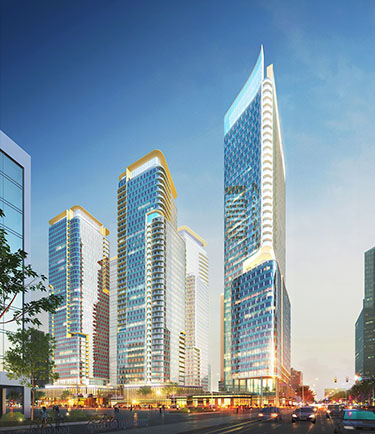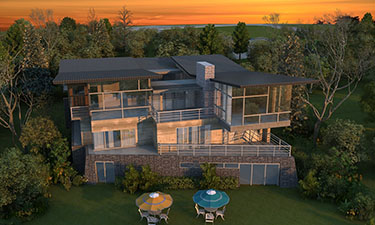|
Subscribe / Renew |
|
|
Contact Us |
|
| ► Subscribe to our Free Weekly Newsletter | |
| home | Welcome, sign in or click here to subscribe. | login |
Architecture & Engineering
| |
November 30, 2015
Ming Zhang still looking up, with new Bellevue design firm
Journal Staff Reporter
Ming Zhang still remembers the awe he felt when he first saw a tall building. In 1973 on a visit to Shanghai, he saw what was then the tallest building in China: the 24-story Art Deco-style Park Hotel.
“I'd never seen a building over 10 stories tall in my hometown,” he said. “It was just fascinating to realize you can build buildings so tall.”
Zhang is still looking up.
The 52-year-old architect started his own firm this year, MZA Architecture in Bellevue, after leaving MulvannyG2 Architecture.
MZA has 15 people designing major projects, including a Bellevue complex that will have four or five towers. The client is Plus Investment USA, and construction could start next summer on the first phase. The site is on Eighth Street between 108th and 110th avenues Northeast.
Zhang said the first phase will cost about $600 million, with at least 750 housing units in two 42-story towers.

Plus Investment expects to start the second phase in two or three years, Zhang said, with more housing as well as a hotel and office space. But what gets built and when will depend on the market.
The architect said one of the towers could be 60 stories if Bellevue goes forward with a rezone for parts of downtown.
Until last year, Zhang was president of MulvannyG2, which recently moved to Seattle and changed its name to MG2.
He was born in Nanjing, China, and moved to Chicago to attend Illinois Institute of Technology, choosing to stay on in the U.S. after earning a master of architecture degree.
His first job in Seattle was at Callison, and Zhang said he helped the firm develop its China market.
After leaving Callison, he opened ZGA Architecture in Seattle to focus on work in China. In 1998, Zhang joined MulvannyG2, and became a design partner. He said he helped the practice grow from being mostly focused on retail into an international design firm.
At the 2006 China Landmark Summit in Beijing, MulvannyG2 was named one of China's top 20 most influential architectural firms. Zhang was recognized among the top 20 most influential designers in China.
Jerry Lee, former CEO and chairman of MG2, hired Zhang. Zhang focused on commercial high-rises in China, Lee said, but also had a lot of design input on domestic projects.
Lee called his former colleague creative and futuristic.
“I think being a minority sometimes you have a different pair of eyes and you have an opportunity to look at things a little different, and I think that's always a plus,” he said.
“I can say that he is probably one of the most talented architects around in regards to high-rise work,” said Lee, who is now executive director of MG2's charitable foundation.
Zhang's new firm works on commercial projects, as well as waterfront houses in Medina and Bellevue.
It is doing a seven-story, mixed-use apartment complex in Seattle and The International Youth Cultural Exchange Center in Fuzhou, China. That 32-acre campus will have centers for conventions and performances, retail and sports facilities, along with a hotel and hostel.
Zhang said he wants his firm to grow slowly and do high quality work.
Part of the reason he sold his shares in MulvannyG2, he said, is to spend less time being a “big shot” with administrative duties and have more time to design.
“I felt to a certain degree guilty for the client because they were only seeing me in the beginning of the project,” he said.
Zhang said architecture in Seattle and Bellevue has improved tremendously in the last 15 years, but he said Seattle could do more to put itself on the “international map.” Seattle has the Bullitt Center, he said, but does not have a truly innovative high-rise.
The Eastside has some advantages over Seattle: less traffic, more green space and strong investment from Chinese immigrants who like the good schools and safety, Zhang said. “That's something Seattle needs to learn.”
Zhang expects apartment development here will cool down and condos will pick up: “The market is waiting for them.”
Tough liability laws have been holding back condo developers and he said the regulations need to be more reasonable.
“It doesn't matter how good your condominium building is designed and built, there are always lawsuits,” he said.
Zhang is a fellow of the American Institute of Architects. He still draws by hand on tracing paper, while others in the office use computers. “I sketch things out and work with the team,” he said.
Zhang still loves super-tall buildings, and wrote his college thesis on how to construct an 81-story building using high-strength concrete. He said most of his Chinese projects at MulvannyG2 were super-tall, including several over 65 stories.
More tall buildings are needed because the world's population continues to grow, he said.
Tall structures leave more room for open space, he said, and they make a big impression on people. “Every city deserves a great image for their citizens and their visitors.”
Lynn Porter can be
reached by email or by phone
at (206) 622-8272.





